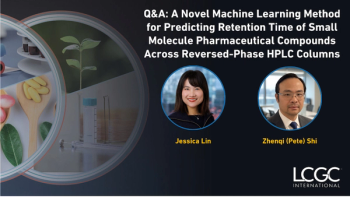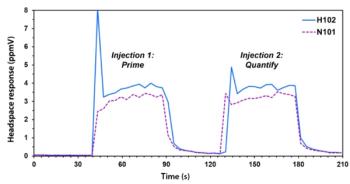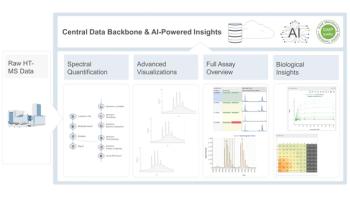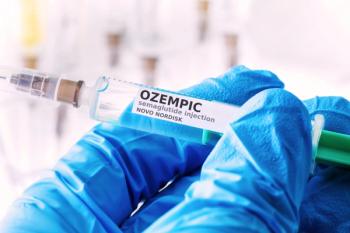
- May 2025
- Volume 2
- Issue 4
- Pages: 28–32
Sample Preparation of Drug Substances and Products in Regulated Testing: A Primer
Michael Dong recently discussed sample preparation (SP) techniques for small-molecule drug substances and solid dosage forms.
This article provides a primer for both novice and experienced analysts on sample preparation (SP) techniques for small-molecule drug substances and solid dosage forms. It describes the “best practices” in the “dilute and shoot” approach and the “tricks of the trade” in weighing small amounts of drug substances (DS) and grinding, extracting, and filtration of oral drug products (DP). Common pitfalls and precautions with mitigation strategies are also discussed.
Analytical testing procedures for analyzing drug substances (DS) and drug products (DP) are among the most common HPLC assays, particularly release and stability-indicating assays used to generate certificates of analysis (CoA) in regulated testing (1). Sample preparation (SP) refers to a family of solid or liquid handling techniques used to extract or enrich analytes from sample matrices into an analyzable format—namely, the final analyte solution (2–3). The sample preparation section in the pharmaceutical analytical procedure generally receives little attention despite its paramount importance in achieving accurate quantitation to ensure the safety and efficacy of the medicine. Non-robust SP procedures, poor techniques, or incomplete extraction of the active pharmaceutical ingredient (API) frequently cause out-of-specification results (1). This lack of attention stems from the simple sample matrix and manual techniques with simple devices that have remained relatively unchanged for decades. While sample preparation in analytical chemistry is well covered in books (2,3) and magazine columns (4), literature coverage for DS and DP is sparse and can be found in these book chapters (5,6). Here, I will provide a practical but comprehensive overview of the topic as a primer for beginners and experienced analysts with a focus on drug substances, tablets, and capsules (the most common dosage forms). Attention is given to common pitfalls and precautions that should be exercised by the analyst in the quality control (QC) laboratories using stability-indicating HPLC methods with UV detection for potency and impurity testing.
Sample Preparation for Drug Substances
The term “dilute and shoot” is quite literal for the analysis of DS. However, there are challenges for novice analysts for two reasons. First, accurately and consistently weighing and transferring small amounts of reference standards and samples quantitatively, typically 25–50 mg, can be difficult for inexperienced staff. Second, the specifications for DS samples are quite tight, typically from 98.0% to 102.0%. Ideally, the accuracy and precision of the measurement should be < 0.5–1.0% RSD, a feat routinely achievable by experienced QC analysts, but challenging for novices.
Table I summarizes a three-step process, including common procedures, precautions, and alternate approaches. The text will provide additional descriptions and explanations.
The DS Sample
The DS or API sample is usually a free-flowing solid in powder form with high chemical purity (1). A qualified reference standard of the API is used as a calibration standard. In early-phase development, the available reference standards are limited (50–100 g); therefore, a typical weight in the range of 25–50 mg for each sample is generally used, rendering the weighing accuracy into an error-limiting step in DS analysis. The use of a microbalance is warranted when weighing DS samples < 20 mg (when the amount of reference standard is very limited). Note that microbalance would require additional environmental, maintenance, and operational requirements.
Precautions
For APIs that require refrigerated storage, the sample should be allowed to warm to room temperature before opening the container to avoid moisture condensation. Speedy sample handling is paramount for hygroscopic APIs to prevent moisture absorption. They may require additional environmental controls in some cases.
Step 1: Weighing
Weighing Samples on a Folded Weighing Paper
Weighing DS samples on a tared and folded weighing paper using a five-place analytical balance with an accuracy of ±0.1 mg is commonly performed, as shown in Figure 1. The folded paper reduces spill and facilitates powder transfers. Many laboratories often prefer small weighing boats to facilitate sample transfer into the volumetric flask or to avoid quantitative transfer using differential weighing.
Balance Enclosure Requirements and Precautions
The analytical balance is placed inside a ventilated enclosure to reduce the analyst’s inhalation exposure, as most new drugs are considered Category 3 SafeBridge compounds (SafeBridge is a potency and toxicity scale). Laboratory fume hoods with high drafts are not recommended. The balance must be regularly maintained and calibrated. High-potency drugs require the use of a glove box for safe handling. An antistatic radiation device is recommended for accurate weighing. Microbalances are generally not warranted in QC laboratories unless the availability of the reference standard is severely limited.
Transferring the Powders into a Volumetric Flask
Most analysts would first tare the balance with the empty weighing paper and then quantitatively transfer all the DS powders into an appropriately sized Class A volumetric flask with a funnel. The diluent is used to rinse all remaining powders into the flask. Alternatively, rinsing may be avoided if the remaining powder on the paper or boat is weighed after the transfer, and the difference is used for the sample weight. The analyst should always double-check if the correct volumetric flask size is used.
Step 2: Solubilization (Dissolution)
Diluent
During method development, the determination of the diluent and its composition depends on the API’s aqueous solubility and other physicochemical properties, such as stability (5). Since most drugs are weak bases, the diluent may be an acidified water or a buffer. For APIs with low aqueous solubility, an organic solvent (acetonitrile, methanol, dimethyl sulfoxide) may be required for initial solubilization, followed by adding an aqueous diluent (6). The eluotropic strength of the final diluent should be compatible with the initial mobile phase condition of the method and kept low to prevent peak anomalies in HPLC analysis (1).
Solubilization
Sonication
Using ultrasonic cleaner baths remains a popular dissolution approach. The bath is filled with only 0.5–1 inch of water without the perforated plate to maximize extraction efficiency. The extraction time is optimized empirically with the specific sonicator during method development. The extraction time should be written in the method to ensure complete dissolution is reached. The analyst should scrutinize the solution to ensure all sample particles are solubilized (this step is particularly important for APIs with low aqueous solubility). Note that prolonged sonication might generate su icient heat to cause API degradation and produce artifact impurity peaks (6). This issue may be mitigated by adding ice to the bath.
Shaker or Vortex Mixer
Many laboratories prefer using a shaker (wrist action or table) or vortex mixer, where the extraction or dissolution process is better defined and replicated than sonication.
Step 3: Transfer the Sample Solution into an HPLC Vial
Finally, an aliquot (1.5 mL) of the DS solution is transferred into an HPLC vial (2-mL) using a disposable pipette. Amber vials are required for light-sensitive solutions. Screw-capped HPLC vials with a thin membrane or septum are standard (split septa for Waters UPLC vials). Crimp caps are not recommended in HPLC. For smaller sample volumes (<300 μL, uncommon for DS analysis), vials with conical bottoms are used for Waters HPLCs, and micro-inserts are used for Agilent autosamplers. Filtration of the DS sample solution is discouraged, as it could raise questions from regulatory agencies because the DS is not supposed to have any particulate matter.
Sample Preparation for Drug Products
For drug products, a more elaborate process of “grind, extract, and filter,” shown in Figure 2, is generally employed to extract the API from the solid matrices of excipients (5,6). Once again, the volumetric flask (25–1000 mL) is used mainly for solubilizing the API in oral DP, such as tablets and capsules. This approach is straightforward for immediate- release dosage forms and more elaborate for sustained-release products or formulations of low-solubility APIs. Further sample cleanup or fractionation is necessary for DP, such as suppositories, creams, lotions, multivitamins, or herbal products. Table II summarizes DP’s sample preparation steps, including procedures, precautions, and alternatives. For detailed discussions on the selection of diluent, optimizing extraction, and case studies, the reader is referred to these book chapters (5,6).
Step 1: Particle Size Reduction: Crushing Tablets
Tablets generally require a particle size reduction step to ensure complete extraction in a timely fashion. Many tablets (10–20 units) are crushed in a porcelain mortar and pestle for potency testing. For tablets with water-soluble APIs formulated with disintegrants, intact tablets may be dropped directly into the volumetric flask without crushing or grinding.
For content uniformity testing, a rough crushing approach involves wrapping a single tablet in weighing paper and hammering it with a pestle before transferring all the powders into the volumetric flask.
Milling with a ball or rotor micro-mill can also facilitate particle size reduction. In most cases, the average tablet weight (ATW) can be predetermined first, and the corresponding amount of milled powders can be transferred for the assay. A freezer mill may be required for residual solvent testing of DPs.
Capsules
Most capsules containing powders or granules are designed to disintegrate in water or stomach acid. Open capsules (if possible) and drop them directly into the volumetric flask. The exceptions are extended-release capsules and soft gels containing liquids, oils, or semi-solid substances, which may require a more elaborate extraction scheme or some additional sample cleanups (5,6).
Transfer All DP Particles
Transfer all the tablet particles quantitatively from the mortar or milling cup, followed by rinsing. Alternatively, one can transfer the corresponding amount of the powders (to an integral number of the ATW) from the composite milled or ground powders.
Dilute
Dilute to Volume with Diluent
The nature and composition of the diluent for extracting the API from the tablet powders are determined during method development and validation (5).
Step 2: Extract
Sonicate to dissolve all powders, using the optimum sonication time determined during method development and validation. Alternatively, many laboratories prefer to extract by shaking (wrist shaker or vortexing). For sustained-release DP, an organic solvent may be required to dissolve the polymer in a two-step extraction process. Some DP, such as suppositories or lotions, may require additional sample preparation steps, including liquid-liquid partitioning or solidphase extraction (5,6). If an extra dilution step is included in the procedure using a volumetric pipette, ensure that the analyst is trained in correctly using the pipette for quantitative delivery of an aliquot.
Step 3: Filter
Filter the extract solution directly into the HPLC vial through a 25-mm 0.45 μm disposable syringe membrane filter (nylon or PTFE). The first 0.5 mL of the filtrate is discarded to clean the filter. Many labs prefer the use of Whatman GD-X filters (6), which are more resistant to clogging due to their multi-layer membrane construction. Some extracts may still be cloudy and may be clarified using a finer filter (0.2 μm) or centrifugation.
Method Validation Requirements and Trends
The validation of analytical procedures in a regulated testing environment is a legal requirement. The validation procedures and acceptance criteria for stability-indicating assays of DS and DP are published in regulatory guidelines (7,8) and summarized elsewhere (9,10). For late-stage DS and DP potency assays, an analysis precision of < 1.0% RSD and < 2–3%, respectively, is expected for late-stage methods. A filtration validation study is a regulatory expectation for DP methods (9).
The manual sample preparation procedures using volumetric flasks, described here for regulated testing, have remained relatively unchanged over the last few decades. Attempts to modernize this time-consuming process using automation technology, such as laboratory robotics, were largely unsuccessful due to difficulties in accurately dispensing and weighing powders. The trend of assay miniaturization is also impractical, as each DP unit may require a good-sized container for solubilization in the diluent. Despite the many shortcomings of the current sample preparation procedures (such as their being arduous and time-consuming), they do provide reliable and accurate results in regulated testing (10). Their use is expected to continue in the near future.
Conclusions and Summary
This primer describes the sample preparation procedures for the high-performance liquid chromatography (HPLC) analysis of small-molecule drug substances and products in regulated testing. The article outlines the best practices and alternative procedures employed in many laboratories, including the “weigh-dilute-shoot” method for drug substances and the “crush-extract-filter” method for tablets. It also describes common pitfalls, mitigation strategies, and alternate approaches.
Acknowledgments
The authors thank the reviewers for providing timely technical and editorial inputs to this article: Alice Krumenaker (retired from Hovione), David VanMeter of Proteome Sciences plc, He Meng of Sanofi, Mike Shifflet of Kenvue, Doug Raynie of South Dakota State University, Kate Evans from Longboard Scientific, Kimberly Lupo of Portreet Pharmaceuticals LLC, James Johnston of Biopeptek Pharmaceutical LLC, and Jim Mitchell of Benuvia Manufacturing.
References
(1) Dong, M. W. HPLC and UHPLC for Practicing Scientists, 2nd ed.; Wiley, 2019. Chapters 9 and 11.
(2) Sampling and Sample Preparation for Field and Laboratory: Fundamentals and New Directions in Sample Preparation, Vol. XXXVII.; Pawliszyn, J., Ed.; Elsevier Science, 2002.
(3) Moldoveanu, S. C.; David, V. Modern Sample Preparation for Chromatography, 2nd ed.; Elsevier, 2021.
(4) Raynie, D. E. Trends in Sample Preparations: Part I. State of the Field. LCGC North Am. 2023, 41 (8), 374–389.
(5) Sample Preparation of Pharmaceutical Dosage Forms: Challenges and Strategies for Sample Preparation and Extraction.; Nickerson, B. Ed.; Springer, 2011.
(6) Choi, C.; Dong, M. W. Sample Preparation for HPLC Analysis for Drug Products. Handbook of Pharmaceutical Analysis by HPLC; Elsevier, 2005, Chapter 5.
(7) Code of Federal Regulations, Title 21, Part 211, Good Manufacturing Practice for Finished Pharmaceuticals, Government Publishing Office.
(8) ICH Q2 (R2) Validation of Analytical Procedures, ICH, 2023.
(9) Dong, M. W.; K. Huynh-Ba, K.; Wong, A. W. Validation of Stability-Indicating HPLC Methods for Pharmaceuticals: Overview, Methodologies and Case Studies. LCGC North Am. 2020, 38 (11), 606–618.
(10) Analytical Testing for the Pharmaceutical GMP Laboratory.; Huynh-Ba, K. Ed.; Wiley, 2022.
About the Author
Articles in this issue
Newsletter
Join the global community of analytical scientists who trust LCGC for insights on the latest techniques, trends, and expert solutions in chromatography.




